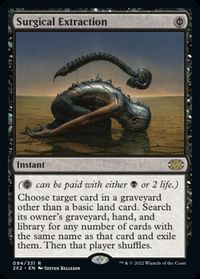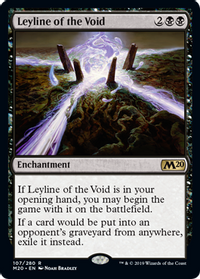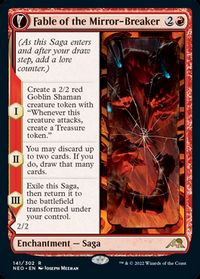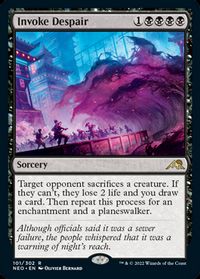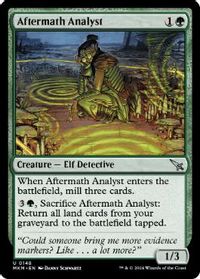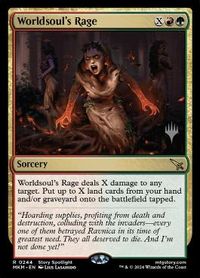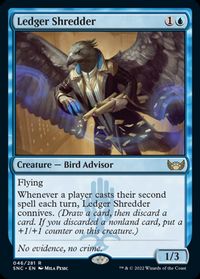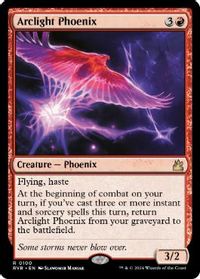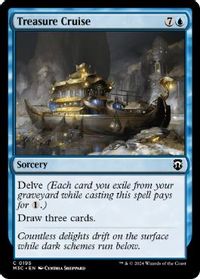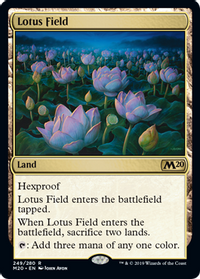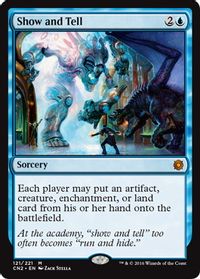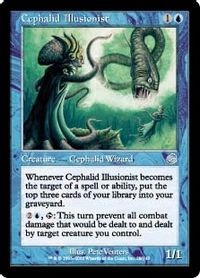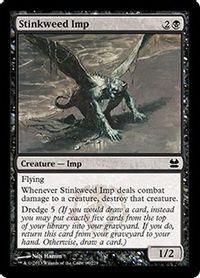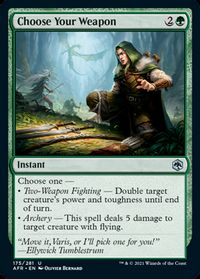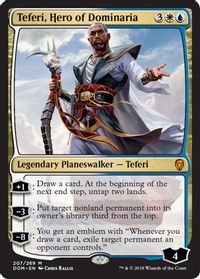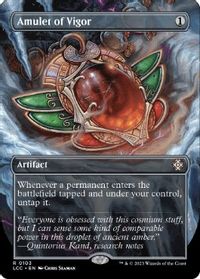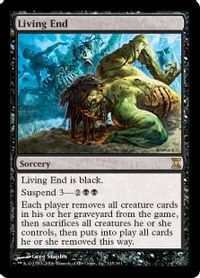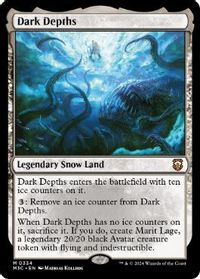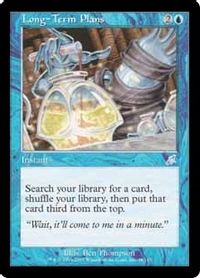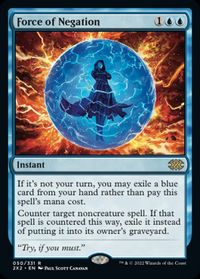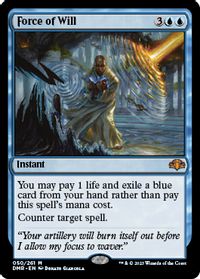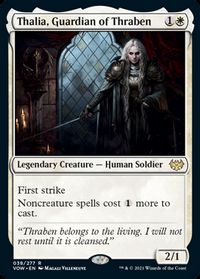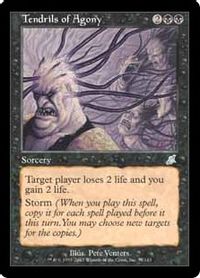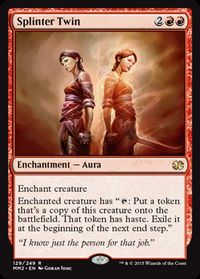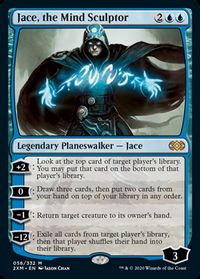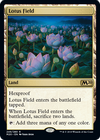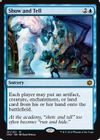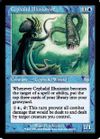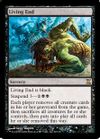Introduction
Hola!
Magic is an extremely complex game, and there are many different ways to learn how to play better. Today I will talk about what has been useful for me in the past and what I try to do in the present to maximize the number of different decks I’m able to play when trying to approach a new format.
What’s a New Format?
The first example of approaching a new format for myself simply happens when I’m playing something I have barely played before. A new Standard after a big rotation comes to mind, as the core cards usually change, new bombs and interactive spells are printed, and most importantly, the manabases usually tend to be considerably different.
However, it’s not limited to that. Sometimes, a single deck showing up changes how the metagame looks like. In other situations, a new archetype showing up doesn’t change the metagame that much, but changes how decks are constructed. Think of all the 《Surgical Extraction》/《Leyline of the Void》 copies we saw when 《Hogaak, Arisen Necropolis》 was legal.
Banning certain cards also creates a whole new format. Think of the banning of 《Fable of the Mirror-Breaker》 + 《Reckoner Bankbuster》 + 《Invoke Despair》 in Standard.
If you are playing competitive Magic with different formats, you are going to be often playing new formats for you. It’s not really about how new a format is, it is about how you feel about it from a personal perspective.
What’s the Best Way to Approach a New Format?
When playing a new format, you are often going to have no idea about what the best deck is going to be. Even if you know what the best deck looks like, you don’t know what the best deck will be for any given weekend. Based on how Magic metagames tend to balance themselves, ideally, you often want to be playing the deck that’s better positioned, even if it’s considerably worse than the other contenders in a vacuum.
There’s a small issue with this approach. Quite often, Magic decks are vastly different from each other, and it is also not that rare to find a deck that works like no other since it has a new mechanic, like Standard Temur Lands. They are also sometimes extremely hard to play with.
The first example that comes to my mind is Izzet Phoenix in Pioneer, where it doesn’t matter how good you are as a player as you will still lose some games due to sequencing incorrectly until you learn the intricacies of the deck.
What happens if you have limited time and you have concluded the best deck for a weekend is one you can’t play reasonably well? That’s a bad spot to be in. The correct play is simply to give up playing the best deck for that weekend, but an ideal situation would be to be able to play such a deck every single time you are in that situation.
The ability to learn how to play certain decks within a small amount of time is something I would consider a player’s Deck Range.
Most good players will be able to learn any magic deck if they have a couple of weeks, but sometimes tournaments leave us with way less space to maneuver. I also think play skill really doesn’t have anything to do with the range itself, as a lot of very strong players are actually specialists of an archetype. I do think, however, that having a larger range will result in a better winrate in the long term.
The situation that inspired this article happened during our preparation for Pro Tour Murders at Karlov Manor, where Anthony Lee and I faced a similar situation in terms of deck selection. We thought Lotus Field might be the best deck for the tournament for a few days, and we actually considered playing it, but we both had almost no experience with the archetype.
Anthony’s technical play is certainly similar to mine, if not better, but in that situation, a difference between us became relevant: Lotus Field was within my range and it was not that much of an option for him.
The feelings of playing Lotus Field actually surprised me. From a strategic point of view, Lotus Field really has a lot of similarities with big mana decks like Modern Tron. That’s only good enough on a surface level. While these two decks occupy a similar spot in the metagame, the trickier part about playing Lotus Field was figuring out how to play around the many different ways your opponent could prevent you from winning the game.
After playing enough games, the deck didn’t certainly feel like a Tron deck, it felt like something else. But it felt like something else that I didn’t expect. Somehow, it felt like playing Show and Tell.
Back in 2013, I spent quite some time playing Show and Tell in Legacy. The reason? I had played so much Delver that I felt I would get better at magic by learning a completely different archetype instead of jamming more games with blue-tempo decks.
After that, I played Show and Tell a bit here and there in some online Legacy events. Show and Tell is also not the only combo deck I have played with, though. I certainly have a lot of hours under my belt with Cephalid Breakfast, but I have also played quite a bit with decks like Oath of Druids or Dredge.
While testing with Lotus Field, it was simply a coincidence that it had some similarities with the Show and Tell decks. Lucky, indeed, but the wider the ranger you are, the more new decks you can actually accommodate in your actual deck selection process.
How Can We Make Our Range Wider in an Effective Way?
The answer is rather obvious; play other decks that are not the ones you are used to playing with. However, that’s not all. Trying to play every single deck in every single format would basically take too much time to consider it a realistic proposition. It would also dilute most of the knowledge you would gain anyway.
I think that instead of learning a bunch of decks, it’s good to wisely choose which decks to learn. Pick a few ones and focus on them instead of trying to play everything at the same time. Personally, I would do it one deck at a time.
The most straightforward way to learn a new macro archetype is simply to decide to prepare a full tournament with a deck we would never play. It doesn’t need to be a huge tournament or anything like that, but an open tournament we would test for will work as long as we care enough to understand our deck properly.
If you are someone who doesn’t have that much experience, I would start with picking decks that are somewhat straight in terms of which archetype they belong to (control comes to mind), as opposed to something more different. However, if you are a seasoned player, I would strongly recommend picking very unique decks. There are always a lot of new things to learn in Magic deckbuilding.
My examples nowadays for this process would be:
Standard: 4-Color Slogurk
Pioneer: Lotus Field or Amalia Combo
Modern: Living End, Yawgmoth or Amulet Titan
Legacy: Lands, Mono Red Prison
Vintage: Doomsday
One benefit you will instantly get if you learn one of these decks for a small tournament is that you will automatically be way better suited if you ever end up playing against them in a bigger tournament. That alone is already a strong argument if you care about high-level Modern/Pioneer events. Playing against a deck like Living End with or without knowing the deck relatively well is certainly a whole different experience.
One thing that’s worth noting about deck ranges is something you can’t really improve in a short time. It takes time, and if you are preparing for an important tournament, it’s probably already too late to improve your range. It is something you need to do beforehand. In exchange, it will pretty much stay with you forever as a Magic player.
This is one of those aspects that I see as similar to working out – Limited testing would be another example – where you have to work on it on the times where you don’t have tournaments that matter too much, or you simply won’t have time to do it while you prepare for the big event. Using small tournaments and the extra time to learn different strategies and acquire a whole new bag of tricks can really pay off after a few months/years.
I have mentioned decks from different formats for a reason. Approaching different formats to the ones you usually play can be costly in terms of time, but I also think the rewards are underrated. Even if Standard/Modern/Pioneer are the formats that you usually play, there are still lessons to be learned from formats like Pauper, Legacy, or Vintage.
After all, my example comes from a Legacy deck being compared to a Pioneer deck! Situations like very large stack countermagic wars can be somewhat common in Vintage but rare in other formats. However, when they do happen, they tend to simply decide the winner of the game, so it’s quite useful to know how to navigate them well.
One more format that can be used to increase our range is Cube. I think Cube drafting is not only very fun but also underrated in terms of being a learning tool for competitive Magic. I also would like to make it clear that I think drafting cube can be useful only if you actually are quite open about the strategies you are going to play.
Forcing Storm or Mono White most of the time will actually have a similar effect than playing the same archetype over and over. But if you actually draft with an open strategy, you will very often end up with decks that are out of your comfort zone.
Even though drafting is usually considered the hardest part of playing Cube, I actually think the part that’s actually better for learning is the gameplay itself. The games themselves are often extremely complicated, and we are forced to think through a lot of possible scenarios if we try to play well.
Cube games are often hard to define in terms of determining stuff like who is better if the game goes long, and hoging those skills is quite useful when picking up new strategies in Constructed. Ironically enough, a lot of cube games are similar to Standard games despite what the power level of the cards might suggest.
Wrap-Up
As someone who often takes a long time to learn new strategies, I’ve sometimes struggled with deck selection for the reasons exposed in this article. Some players are naturally good at playing many different strategies. I was not. However, I think that with work and some good planning, any player can make it so they can have a wider range and therefore grab that extra win % by playing the best every weekend.
I am nowadays happy with my deck range and that’s how I got there. Are you going to give it a try?
Thanks for reading!



